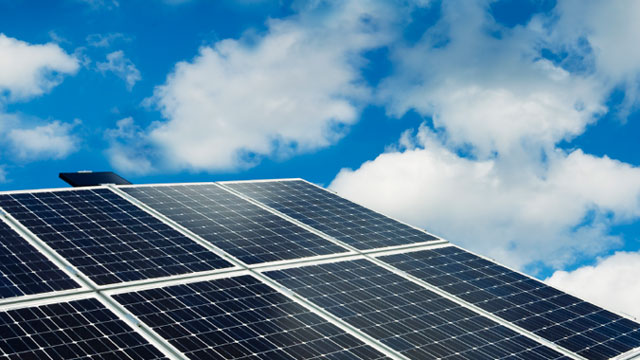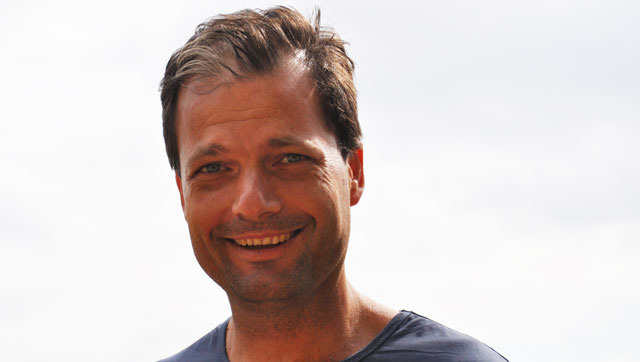
South Africa could become one of the fastest-growing renewable energy markets in the world, according to a recent study. This is not bad for a country that in 2011 had almost no renewable projects on the table and was the 12th highest carbon-emitting nation in the world.
Sceptics have pointed out, quite rightly, that coming off such a low base any renewable project drive would look impressive. But it is difficult to dismiss a project the size of the renewable energy independent power producer procurement programme (REIPPP), and even the most hardened critic would have to admit that, in terms of a government-run project, it sets the bar relatively high when it comes to planning and transparency.
The study by Frost & Sullivan, which has carried out research for Eskom, among others, states that, if the programme goes ahead as planned, South Africa could be in the “global top 15 countries” by 2020 with regard to the implementation of renewable energy projects.
At present, less than 1% of the country’s energy comes from renewable energy, and this is expected to increase to about 2% to 3% (1,4GW) by about 2014.
The energy department plans for renewable energy to make up 12% of the energy mix by 2020, increasing to 17% by 2030 — a “substantial contribution”, according to Frost & Sullivan energy and research analyst Joanita Roos.
When the government first introduced the programme in August 2011, saying it would generate 3,7GW of the country’s total energy from renewable sources by 2030, it was considered ambitious. And, when the first round, or window one, of the project fell three months behind schedule, it appeared the ambitious plan was set to fail at the start.
But Roos said the lessons learned in window one saw the second round of applications completed on time and the third round of preferred bidders is expected to be announced on 29 October as scheduled. There are still two more rounds of the programme.
Projects from the first round are in the construction phase and those that generate electricity from solar photovoltaic (PV) cells could be up and running early next year. Projects from the second round are expected to come on line in 2014 or 2015.
Interest in the programme leapt between rounds one and two, with the second attracting investment interest from such big names as Google, and many of the big hitters in the global solar PV industry opened operations or launched joint ventures in South Africa.
Google, in announcing its involvement in a R103m solar energy plant in the Northern Cape in June this year, indicated that it was impressed by the progress it perceived.
“South Africa’s strong resources and supportive policies for renewable energy make it an attractive place to invest, which is why it had the highest growth in clean energy investment in the world last year,” it said.
International companies are required to form local partnerships if they hope to win any tenders. Hopefully, this will develop local expertise and lead to expansion in African countries where renewable energy is still in its infancy.
Dirk de Vos, an expert on renewable energy, said the programme is a good example of a successful public-private partnership. The government agrees to buy the power and the private sector carries the risk should the project not come in on time.
But South Africa had no real option but to make this work, said Vos, which can be a big contributor to its success. Faced with water and electricity scarcity, rising coal prices and with the blackouts of 2008 still fresh in the mind of South Africans, growth could not be encouraged unless it explored renewable energy.
As one energy expert said, the South African government knew that, if it wanted money from the World Bank, it had to show it was looking at meaningful ways to reduce its carbon emissions and to improve its energy efficiency.
Among other projects funded by the World Bank is the Eskom investment support project (US$3,7bn), the renewable energy market transformation project ($6m) and the $250m grant from the Clean Technology Fund to support the building of renewable solar and wind energy sources.
Frost & Sullivan said the expected value of local content for the first and second phase of the REIPPP is expected to be up to R23,2bn, with 21 214 operational and construction jobs to be created. Overall, the programme is expected to create investment of about R100bn between 2012 and 2016.

The research found that the cost of renewable energy technology is declining, whereas “the Eskom tariff for its coal-based electricity” continues to rise sharply. “It’s expected that grid parity for wind will be reached by 2015 and by 2018 for solar PV,” according to the research.
Another report from Frost & Sullivan, commissioned by the South African Photovoltaic Industry Association, stated that a greater use of solar PV could reduce energy costs from Eskom’s expected R1,69/kWh in 2020 to between 74c/kWh and R1,36/kWh.
Solar PV costs have been decreasing 8% to 10% a year and, working on the assumption of an 8% yearly tariff increase for Eskom, solar PV is expected to reach grid parity, or the same cost as coal-derived electricity, by 2018, or even earlier for larger projects.
But the programme has its drawbacks. Frost & Sullivan’s report warned that uncertainty over local content requirements and long and expensive tender applications could slow down the implementation of renewable energy projects.
Some renewable energy products, and components for solar water heaters, for example, have been identified as products that should be sourced locally. The department of trade & industry, which is continuing to conduct research, is expected to release new lists from time to time.
The report said: “Under the REIPPP, various renewable technologies have to meet minimum annual targets by the medium term in order to stimulate local manufacturing and services. However, the parameters for each technology will need to be defined individually, and the local industry may lose momentum if certainty over local requirements and capacity allocations are not provided.”
One bidding company said one of the biggest challenges of the third round is for developers to reach the required 40% to 65% local content requirement.
The tender process is also considered extremely complicated and prohibitively expensive by some developers, including not only local content requirements but also black economic empowerment criteria and detailed environmental impact assessments.
The Banking Association’s MD, Cas Coovadia, recently held up the renewable energy project as an example of the government getting something right. At the time, he was criticising delays in the commissioning of infrastructure.
Roos said she believes that, “based on the current developments, it is likely that the government will reach its projected 3,7GW goal as scheduled. The project sets South Africa ahead of the rest of Africa, where there are significant opportunities for South African companies with experience on renewable energy projects,” she said. — (c) 2013 Mail & Guardian
- Visit the Mail & Guardian Online, the smart news source




